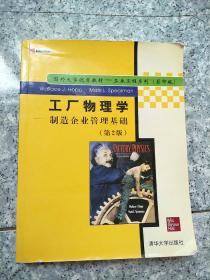
工厂物理学:(制造企业管理基础 第2版影印版)/工业工程系列【馆藏 有章没勾画】后封面有点破损
¥ 245 八五品
仅1件
作者[美]霍普(Wallace j.Hopp)、[美]斯皮尔曼(Mark L.Spearman) 著
出版社清华大学出版社
出版时间2002-11
版次1
装帧平装
货号33-4
上书时间2022-12-11
- 在售商品 暂无
- 平均发货时间 5小时
- 好评率 暂无
- 最新上架
商品详情
- 品相描述:八五品
图书标准信息
- 作者 [美]霍普(Wallace j.Hopp)、[美]斯皮尔曼(Mark L.Spearman) 著
- 出版社 清华大学出版社
- 出版时间 2002-11
- 版次 1
- ISBN 9787302059738
- 定价 66.00元
- 装帧 平装
- 开本 16开
- 纸张 其他
- 页数 698页
- 正文语种 英语
- 【内容简介】
- 《工厂物理学:制造企业管理基础》(第2版影印版)的作者是美国西北大学的W.J.Hopp教授和佐治亚理工学院的M.L.Spearman教授,是生产运作管理领域的知名学者,都是学物理出身,在多年实践经验和理论研究的基础上,以独特的视角与思维方式对发生在制造企业中的现象和本质进行了透彻的分析和系统的总结,以类似于物理学中定律定理的方式给出了准确的定性描述或定量计算公式。书中不仅对生产管理的发展历史和现状、取得的成就和问题等进行了精辟的总结和分析,而且紧密跟踪当前最先进的方法和技术,并预测了今后的发展趋势。
- 【目录】
-
0FactoryPhysics?
0.1TheShortAnswer
0.2TheLongAnswer
0.2.1Focus:ManufacturingManagement
0.2.2Scope:Operations
0.2.3Method:FactoryPhysics
0.2.4Perspective:FlowLines
0.3AnOverviewoftheBook
PARTITHELESSONSOFHISTORY
1ManufacturinginAmerica
1.1Introduction
1.2TheAmericanExperience
1.3TheFirstIndustrialRevolution
1.3.1TheIndustrialRevolutioninAmerica
1.3.2TheAmericanSystemofManufacturing
1.4TheSecondIndustrialRevolution
1.4.1TheRoleoftheRailroads
1.4.2MassRetailers
1.4.3AndrewCarnegieandScale
1.4.4HenryFordandSpeed
1.5ScientificManagement
1.5.1FrederickW.Taylor
1.5.2PlanningversusDoing
1.5.3OtherPioneersofScientificManagement
1.5.4TheScienceofScientificManagement
1.6TheRiseoftheModernManufacturingOrganization
1.6.1DuPont,Sloan,andStructure
1.6.2HawthorneandtheHumanElement
1.6.3ManagementEducation
1.7Peak,Decline,andResurgenceofAmericanManufacturing
1.7.1TheGoldenEra
1.7.2AccountantsCountandSalesmentSell
1.7.3TheProfessionalManager
1.7.4RecoveryandGlobalizationofManufacturing
1.8TheFuture
DiscussionPoints
Studyquestions
2InventoryControl:FromEOQtoROP
2.1Introduction
2.2TheEconomicOrderQuantityModel
2.2.1Motivation
2.2.2TheModel
2.2.3TheKeyInsightofEOQ
2.2.4Sensitivity
2.2.5EOQExtensions
2.3DynamicLotSizing
2.3.1Motivation
2.3.2ProblemFormulation
2.3.3TheWagner-WhitinProcedure
2.3.4InterpretingtheSolution
2.3.5Caveats
2.4StatisticalInventoryModels
2.4.1TheNewsVendorModel
2.4.2TheBaseStockModel
2.4.3TheModel
2.5Conclusions
Appendix2ABasicProbability
Appendix2BInventoryFormulas
StudyQuestions
Problems
3TheMRPCrusade
3.1MaterialRequirementsPlanning-MRP
3.1.1TheKeyInsightofMRP
3.1.2OverviewofMRP
3.1.3MRPInputsandOutputs
3.1.4TheMRPProcedure
3.1.5SpecialTopicsinMRP
3.1.6LotSizinginMRP
3.1.7SafetyStockandSafetyLeadTimes
3.1.8AccommodatingYieldLosses
3.1.9ProblemsinMRP
3.2ManufacturingResourcesPlanning-MRPII
3.2.1TheMRPIIHierarchy
3.2.2Long-RangePlanning
3.2.3IntermediatePlanning
3.2.4Short-TermControl
3.3BeyondMRPII-EnterpriseResourcesPlanning
3.3.1HistoryandSuccessofERP
3.3.2AnExample:SAPR/3
3.3.3ManufacturingExecutionSystems
3.3.4AdvancedPlanningSystems
3.4Conclusions
StudyQuestions
Problems
4TheJITRevolution
4.1TheOriginsofJIT
4.2JITGoals
4.3TheEnvironmentasaControl
4.4ImplementingJIT
4.4.1ProductionSmoothing
4.4.2CapacityBuffers
4.4.3SetupReduction
4.4.4Cross-TrainingandPlantLayout
4.4.5TotalQualityManagement
4.5Kanban
4.6TheLessonsofJIT
DiscussionPoint
StudyQuestions
5WhatWentWrong
5.1Introduction
5.2TroublewithScientificManagement
5.3TroublewithMRP
5.4TroublewithJIT
5.5WherefromHere?
DiscussionPoints
StudyQuestions
PARTIIFACTORYPHYSICS
6AScienceofManufacturing
6.1TheSeedsofScience
6.1.1WhyScience?
6.1.2DefiningaManufacturingSystem
6.1.3PrescriptiveandDescriptiveModels
6.2Objectives,Measures,andControls
6.2.1TheSystemsApproach
6.2.2TheFundamentalObjective
6.2.3HierarchicalObjectives
6.2.4ControlandInformationSystems
6.3ModelsandPerformanceMeasures
6.3.1TheDangerofSimpleModels
6.3.2BuildingBetterPrescriptiveModels
6.3.3AccountingModels
6.3.4TacticalandStrategicModeling
6.3.5Considering
6.4Conclusions
Appendix6AActivity-BasedCosting
StudyQuestions
Problems
7BasicFactoryDynamics
7.1Introduction
7.2DefinitionsandParameters
7.2.1Definitions
7.2.2Parameters
7.2.3Examples
7.3SimpleRelationships
7.3.1Best-CasePerformance
7.3.2Worst-CasePerformance
7.3.3PracticalWorst-CasePerformance
7.3.4BottleneckPatesandCycleTime
7.3.5InternalBenchmarking
7.4Labor-ConstrainedSystems
7.4.1AmpleCapacityCase
7.4.2FulFlexibilityCase
7.4.3CONWIPLineswithFlexibleLabor
7.5Conclusions
StudyQuestions
Problems
Intuition-BuildingExercises
8VariabiityBasics
8.1Introduction
8.2VariabilityandRandomness
8.2.1TheRootsofRandomness
8.2.2ProbabilisticIntuition
8.3ProcessTimeVariability
8.3.1MeasuresandClassesofVaribability
8.3.2LowandModerateVariability
8.3.3HighlyVariableProcessTimes
8.4CausesofVariability
8.4.1NaturalVariability
8.4.2VariabilityfromPreemptiveOutages(Breakdowns)
8.4.3VariabilityfromNonpreemptiveOutages
8.4.4VariabilityfromRecycle
8.4.5SummaryofVariabilityFormulas
8.5FlowVariability
8.5.1CharacterizingVariabilityinFlows
8.5.2BatchArrivalsandDepartures
8.6VariabilityInteractions-Queueing
8.6.1QueueingNotationandMeasures
8.6.2FundamentalRelations
8.6.3TheM/M/1Queue
8.6.4PerformanceMeasures
8.6.5SystemswithGeneralProcessandInterarrivalTimes
8.6.6ParallelMachines
8.6.7ParallelMachinesandGeneralTimes
8.7EffectsofBlocking
8.7.1TheM/M/1/bQueue
8.7.2GeneralBlockingModels
8.8VariabilityPooling
8.8.1BatchProcessing
8.8.2SafetyStockAggregation
8.8.3QueueSharing
8.9Conclusions
StudyQuestions
Problems
9TheCorruptingInfluenceofVariability
9.1Introduction
9.1.1CanVariabilityBeGood?
9.1.2ExamplesofGoodandBadVariability
9.2PerformanceandVariability
9.2.1MeasuresofManufacturingPerformance
9.2.2VariabilityLaws
9.2.3BufferingExamples
9.2.4PayMeNoworPayMeLater
9.2.5Flexibility
9.2.6OrganizationalLearning
9.3FlowLaws
9.3.1ProductFlows
9.3.2Capacity
9.3.3Utilization
9.3.4VariabilityandFlow
9.4BatchingLaws
9.4.1TypesofBatches
9.4.2ProcessBatching
9.4.3MoveBatching
9.5CycleTime
9.5.1CycleTimeataSingleStation
9.5.2AssemblyOperations
9.5.3LineCycleTime
9.5.4CycleTime,LeadTime,andService
9.6DiagnosticsandImprovement
9.6.1IncreasingThroughput
9.6.2ReducingCycleTime
9.6.3ImprovingCustomerService
9.7Conclusions
StudyQuestions
Intuition-BuildingExercises
Problems
10PushandPullProductionSystems
10.1Introduction
10.2Definitions
10.2.1TheKeyDifferencebetweenPushandPull
10.2.2ThePush-PullInterface
10.3TheMagicofPull
10.3.1ReducingManufacturingCosts
10.3.2ReducingVariability
10.3.3ImprovingQuality
10.3.4MaintainingFlexibility
10.3.5FacilitatingWorkAhead
10.4CONWIP
10.4.1BasicMechanics
10.4.2Mean-ValueAnalysisModel
10.5ComparisonsofCONWIPwithMRP
10.5.1Observability
10.5.2Efficiency
10.5.3Variability
10.5.4Robustness
10.6ComparisonsofCONWIPwithKanban
10.6.1CardCountIssues
10.6.2ProductMixIssues
10.6.3PeopleIssues
10.7Conclusions
StudyQuestion
Problems
11TheHumanElementinOperationsManagement
11.1Introduction
11.2BasicHumanLaws
11.2.1TheFoundationofSelf-interest
11.2.2TheFactofDiversity
11.2.3ThePowerofZealotry
11.2.4TheRealityofBurnout
11.3PlanningversusMotivating
11.4ResponsibilityandAuthority
11.5Summary
DiscussionPoints
StudyQuestions
12TotalQualityManufacturing
12.1Introduction
12.1.1TheDecadeofQuality
12.1.2Aqualityanecdote
12.1.3TheStatusofQuality
12.2ViewsofQuality
12.2.1GeneralDefinitions
12.2.2InternalversusExternalQuality
12.3StatisticalQualityControl
12.3.1SQCApproaches
12.3.2StatisticalProcessControl
12.3.3SPCExtensions
12.4QualityandOperations
12.4.1QualitySupportsOperations
12.4.2OperationsSupportsQuality
12.5QualityandtheSupplyChain
12.5.1ASafetyLeadTimeExample
12.5.2Purchased
PARTsinanAssemblySystem
12.5.3VendorSelectionandManagement
12.6Conclusions
StudyQuestions
Problems
PARTIIIPRINCIPLESINPRACTICE
13APullPlanningFramework
13.1Introduction
13.2Disaggregation
13.2.1TimeScalesinProductionPlanning
13.2.2OtherdimensionsofDisaggregation
13.2.3Coordination
13.3Forecasting
13.3.1CausalForecasting
13.3.2TimeSeriesForecasting
13.3.3TheArtofForecasting
13.4PlanningforPull
13.5HierarchicalProductionPlanning
13.5.1Capacity/FacilityPlanning
13.5.2WorkforcePlanning
13.5.3AggregatePlanning
13.5.4WIPandQuotaSetting
13.5.5DemandManagement
13.5.6SequencingandScheduling
13.5.7ShopFloorControl
13.5.8Real-TimeSimulation
13.5.9ProductionTraching
13.6Conclusions
Appendix13AAQuota-SettingModel
StudyQuestions
Problems
14ShopFloorControl
14.1Introduction
14.2GeneralConsiderations
14.2.1GrossCapacityControl
14.2.2BottleneckPlanning
14.2.3SpanofControl
14.3CONWIPConfigurations
14.3.1BasicCONWIP
14.3.2TandemCONWIPLines
14.3.3SharedResources
14.3.4Multiple-ProductFamilies
14.3.5CONWIPAssemblyLines
14.4OtherPullMechanisms
14.4.1Kanban
14.4.2Pull-from-the-BottleneckMethods
14.4.3ShopFloorControlandScheduling
14.5ProductionTracking
14.5.1StatisticalThroughputControl
14.5.2Long-RangeCapacityTracking
14.6Conclusions
Appendix14AStatisticalThroughputControl
StudyQuestions
Problems
15ProductionScheduling
15.1GoalsofProductionScheduling
15.1.1MeetingDueDates
15.1.2MaximizingUtilization
15.1.3ReducingWIPandCycleTimes
15.2ReviewofSchedulingResearch
15.2.1MRP,MRPII,andERP
15.2.2ClassicScheduling
15.2.3Dispatching
15.2.4WhySchedulingIsHard
15.2.5GoodNewsandBadNews
15.2.6PracticalFinite-CapacityScheduling
15.3LinkingPlanningandScheduling
15.3.1OptimalBatching
15.3.2DueDateQuoting
15.4BottleneckScheduling
15.4.1CONWIPLinesWithoutSetups
15.4.2SingleCONWIPLineswithSetups
15.4.3BottleneckSchedulingResults
15.5DiagnosticScheduling
15.5.1TypesofScheduleInfeasibility
15.5.2CapacitatedMaterialRequirementsPlanning-MRP-C
15.5.3ExtendingMRP-CtoMoreGeneralEnvironments
15.5.4PracticalIssues
15.6ProductionSchedulinginaPullEnvironment
15.6.1SchedulePlanning,PullExecution
15.6.2UsingCONWIPwithMRP
15.7Conclusions
StudyQuestions
Problems
16AggregateandWorkforcePlanning
16.1Introduction
16.2BasicAggregatePlanning
16.2.1ASimpleModel
16.2.2AnLPExample
16.3ProductMixPlanning
16.3.1BasicModel
16.3.2AsimpleExample
16.3.3ExtensionstotheBasicModel
16.4WorkforcePlanning
16.4.1AnLPModel
16.4.2ACombinedAP/WPExample
16.4.3ModelingInsights
16.5Conclusions
Appendix16ALinearProgramming
StudyQuestions
Problems
17SupplyChainManagement
17.1Introduction
17.2ReasonsforHoldingInventory
17.2.1RawMaterials
17.2.2WorkinProcess
17.2.3FinishedGoodsInventory
17.2.4SpareParts
17.3ManagingRawMaterials
17.3.1VisibilityImprovements
17.3.2ABCClassification
17.3.3Just-in-Time
17.3.4SettingSafetyStock/LeadTimesforPurchasedComponents
17.3.5SettingOrderFrequenciesforPurchasedComponents
17.4ManagingWIP
17.4.1ReducingQueueing
17.4.2ReducingWait-for-BatchWIP
17.4.3ReducingWait-to-MatchWIP
17.5ManagingFGI
17.6ManagingSpareParts
17.6.1StratifyingDemand
17.6.2StockingSparePartsforEmergencyRepairs
17.7MultiechelonSupplyChains
17.7.1SystemConfigurations
17.7.2PerformanceMeasures
17.7.3TheBullwhipEffect
17.7.4AnApproximationforaTwo-LevelSystem
17.8Conclusions
DiscussionPoint
StudyQuestions
Problems
18CapacityManagement
18.1TheCapacity-SettingProblem
18.1.1Short-TermandLong-TermCapacitySetting
18.1.2StrategicCapacityPlanning
18.1.3TraditionalandModernViewsofCapacityManagement
18.2ModelingandAnalysis
18.2.1Example:AMinimumCost,Capacity-FeasibleLine
18.2.2ForcingCycleTimeCompliance
18.3ModifyingExistingProductionLines
18.4DesigningNewProductionLines
18.4.1TheTraditioinalApproach
18.4.2AFactoryPhysicsApproach
18.4.3OtherFacilityDesignConsiderations
18.5CapacityAllocationandLineBalancing
18.5.1PacedAssemblyLines
18.5.2UnbalancingFlowLines
18.6Conclusions
Appendix18ATheLine-of-BalanceProblem
StudyQuestions
Problems
19Synthesis-PullingItAllTogether
19.1TheStrategicImportanceofDetails
19.2ThePracticalMatterofImplementation
19.2.1ASystemsPerspective
19.2.2InitiatingChange
19.3FocusingTeamwork
19.3.1ParetosLaw
19.3.2FactoryPhysicsLaws
19.4AFactoryPhysicsParable
19.4.1HittingtheTrail
19.4.2TheChallenge
19.4.3TheLayoftheLand
19.4.4TeamworktotheRescue
19.4.5HowthePlantWasWon
19.4.6Epilogue
19.5TheFuture
References
Index
相关推荐
-
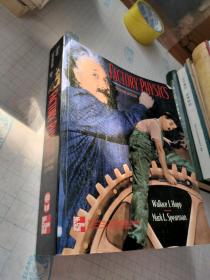
FACTORY PHYSICS(工厂物理学)
八品衡水
¥ 450.00
-
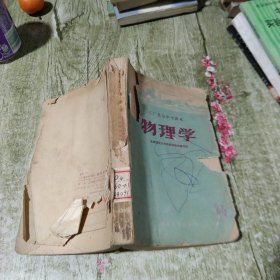
工厂业余中学课本 物理学
七品重庆
¥ 2.80
-
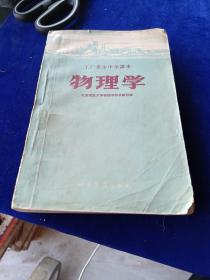
工厂业余中学课本 物理学
八品本溪
¥ 5.00
-
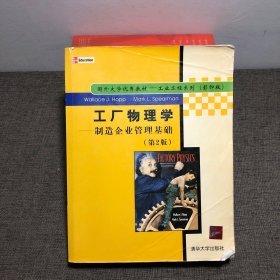
工厂物理学:(制造企业管理基础第2版影印版)/工业工程系列
八品武汉
¥ 200.00
-

工厂物理学:(制造企业管理基础第2版影印版)/工业工程系列
八五品邯郸
¥ 220.00
-

工厂物理学:(制造企业管理基础第2版影印版)/工业工程系列
八品周口
¥ 290.00
-

工厂物理学:(制造企业管理基础第2版影印版)/工业工程系列
八五品宁波
¥ 300.00
-
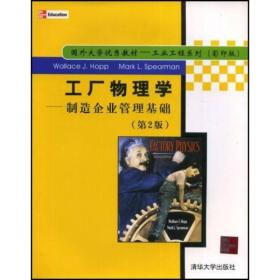
工厂物理学 制造企业管理基础第2版影印版 工业工程系列
九品济南
¥ 368.00
-
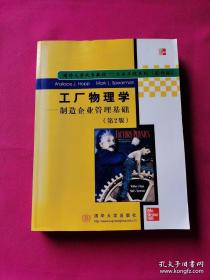
工厂物理学:(制造企业管理基础第2版影印版)/工业工程系列
全新佛山
¥ 199.00
-

工厂物理学:(制造企业管理基础第2版影印版)/工业工程系列
九品沈阳
¥ 276.00
— 没有更多了 —











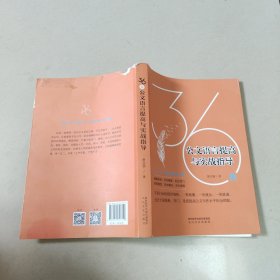
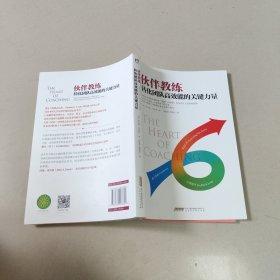
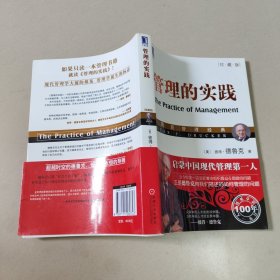


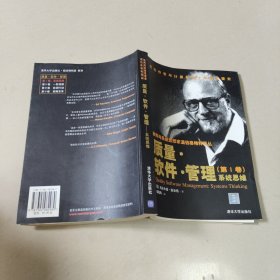
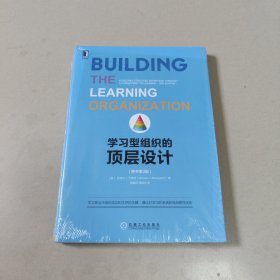


以下为对购买帮助不大的评价